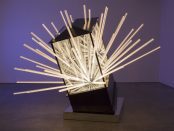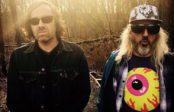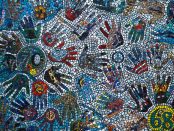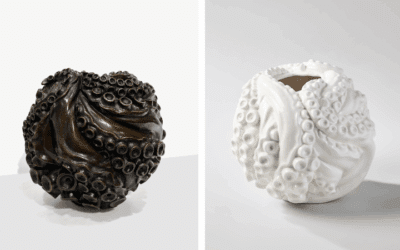[dropcap style=”font-size:100px;color:#992211;”]O[/dropcap]n first watch, this 90-minute ‘monk-umentary’ didn’t do much for me. And that actually overstates the case.
Hence, I forged ahead and began crafting a distinctly negative review. Thankfully, needing hard evidence for my disdain, I was forced to re-watch the film—intensely focused, with a keen eye for detail.
And so, in a moment of high irony, my Buddhist-like total presence resulted in a partial, if not full, reversal. No longer passively receiving ‘entertainment’, I was now actively seeking enlightenment.
But did I find it?
Before answering, some background:
Activist and filmmaker, Dawn Gifford Engle and her husband, Ivan Suvanjieff, are founders of the nonprofit PeaceJam Foundation. To date, they have produced five films. The Dalai Lama: Scientist, the most recent, was six years in the making.
Gifford Engle mentions (in a separate TibetTV interview) that His Holiness the Dalai Lama (HHDL) sees himself as ‘half Buddhist monk, half scientist’ and, as an under-appreciated facet of his life, HHDL recommended this as the film’s subject.
So, what lost me on first watch? Well, in a 90-minute film, it’s simply too much of to cover, in depth: 1) HHDL’s origins and life experience 2) HHDL’s lifelong interest in science 3) parallels between western and Buddhist science AND 4) HHDL’s support of Buddhist monk scientific education. Just one of those topics is worth an entire film, or several. I found myself wanting more depth on, say, 1), while the film had already breezily moved onto 2), and so on.
But, on my second, more focused viewing, I realised that the meat of the film is 3), the parallels between western and Buddhist science. There are five sections here, including: cosmology, quantum physics, cognitive science/psychology, neuroscience, molecular biology and genetics. And, if the viewer focuses intensely on these parallels, such effort will be rewarded with insight, if not total consciousness…
Aesthetically, the film momentarily achieves visual Nirvana—albeit in the first few minutes—which feature beautiful, HD-quality shots of Himalayan peaks, prayer flags, rolling green steppes and Buddhist temples. Also early on, archive footage of a young Dalai Lama, China’s Tibetan incursion, and His Holiness’ escape all imbue the film with grainy, ‘witness-to-history’ authenticity. Later emphasis on interview, private audience and conference footage is less visually impressive.
The Dalai Lama — Scientist Official Trailer from PeaceJam on Vimeo.
Although the animated sequences fit the moment and are well done, the narrator, a tad annoyingly, speaks in a ‘story-time for the kiddies’ voice, coyly suggesting ‘the little boy had a secret locked inside his heart’. Cut to HHDL saying, “Since my childhood, I love technology.” OK. I guess the cat’s out of the bag. Big reveal complete and we’re not five minutes in…
In the same section, HHDL explains that if he hadn’t become the Dalai Lama, he would have been an engineer or electrician. And that, as a boy, he took apart small toys out of curiosity, with “50/50 chance to reassemble”. His Holiness’ legendary sense of humour deservedly getting some airtime here. Shortly thereafter, HHDL self-evaluates as a “very, very lazy student. Always prefer play”. Fully human, as always. In fact, this underlying interview (interspersed throughout) is what keeps the film entertaining. The science may be the meat, but His Holiness is the hot sauce.
Ultimately, The Dalai Lama: Scientist is a (perhaps overly) ambitious project, undertaken in support of a noble cause and worth watching. I don’t think I quite achieved enlightenment, but I’m primed for further study…
The award-winning film, The Dalai Lama: Scientist, is now available for exclusive streaming on Google Play and Vimeo.
R. Falk Fisher writes daily. He wished he was somewhere else until he realized he was there.






















